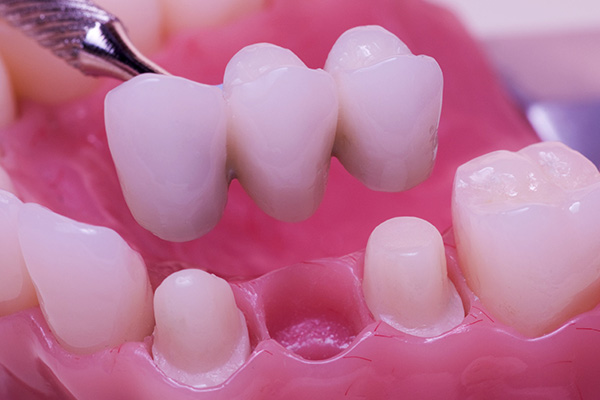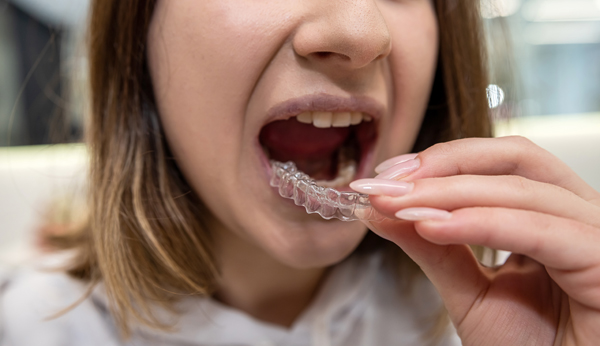3 Dental Bridge FAQs

The function of a Dental Bridges is to literally bridge the gap left after a tooth is lost or extracted due to damage or infection. This tooth replacement option offers a natural-looking and durable solution for many patients. This article answers some frequently asked questions about dental bridges.
3 Frequently asked questions about dental bridges
A dental bridge is made up of two or more crowns fitted over the teeth on the sides of the gap. These teeth are called abutment teeth and they provide structural support for the false tooth (called the pontic) that sits in the gap. Nowadays, bridges are usually produced from porcelain and serve as a lasting, natural-looking option for replacing lost or damaged teeth.
1. What are the different types of dental bridges?
Some of the common types of dental bridges include:
- Traditional bridges: These are the most common option, and they have one or more false teeth supported by crowns on each side
- Maryland bridges: This type of bridge functions by fixing the pontic to only one side of the adjacent teeth, often the back. The adjacent teeth require no filing, making it more conservative
- Cantilever bridges: These are usually used when there are healthy teeth on only one side of the gap or missing tooth. This option is not advisable for areas of the mouth that face high stress or pressure, such as the back molars
Note that each of these bridges has its benefits and drawbacks. The dentist will help patients choose the most suitable option for them.
2. What happens during a dental bridge appointment?
Patients looking to get a dental bridge should prepare for at least two appointments. After the initial appointment, the dentist will prepare the nearby teeth for the crown process. A small layer of the tooth enamel will be removed to connect the bridge structure. The process may take about an hour since the teeth need to be shaped with the utmost precision. The dentist will take impressions of the teeth and provide a temporary bridge to wear before the final bridge is ready.
At the second appointment, the dentist will remove the temporary bridge and place the permanent bridge. This appointment may occur about three weeks after the first appointment to allow enough time to produce a fitting bridgework.
3. Is any special care necessary for dental bridges?
The bridge should feel normal in the mouth after the procedure. The bite should be aligned, but it may take some time to get used to the shape of the bridge. The dentist will recommend eating only soft foods at first until the mouth recovers from any initial sensitivity.
To maximize the lifespan of the bridge, it is necessary to take oral hygiene seriously. Aside from flossing the natural teeth, patients also need to floss under the fake tooth, as well. Flossing can be difficult with a dental bridge, so the dentist might provide special cleaning tools and instructions on how to properly clean the teeth. Regular dental appointments are also important for checkups and cleaning. With proper care, a dental bridge can last up to 10 years or more on average.
Ready to get started with a dental bridge?
If you have additional questions about dental bridges, we invite you to schedule a consultation with our dentist for answers.
Request an appointment here: https://www.smilesforlifedentalgroup.com or call Smiles for Life Dental Group at (408) 500-0819 for an appointment in our Santa Clara office.
Check out what others are saying about our dental services on Yelp: Dental Bridges in Santa Clara, CA.
Recent Posts
If an individual is missing a few teeth, dental bridges can help. Missing teeth can be due to a variety of reasons. Bridges are fixed prosthetics that can help solve the gap of missing teeth. They are an excellent option for individuals who may not need a complete set of dentures, as they are only…
If an individual is missing a few teeth, dental bridges can help. Missing teeth can be due to a variety of reasons. Bridges are fixed prosthetics that can help solve the gap of missing teeth. They are an excellent option for individuals who may not need a complete set of dentures, as they are only…
A loose dental bridge can occur for many reasons, including excessive wear and tear, damage to the abutment teeth and periodontal concerns. The sooner that you can detect a loose or damaged dental bridge, the better chance you have to make an inexpensive repair and save the dental bridge from becoming lost. A dental bridge may…
Individuals with missing teeth have several options for restoring their smiles, and one of these options are dental bridges. Bridges can assist with filling the gaps left behind by missing teeth. Are they the right choice for you? Determining the answer to this question depends on several factors, so let’s get started.They consist of artificial…


